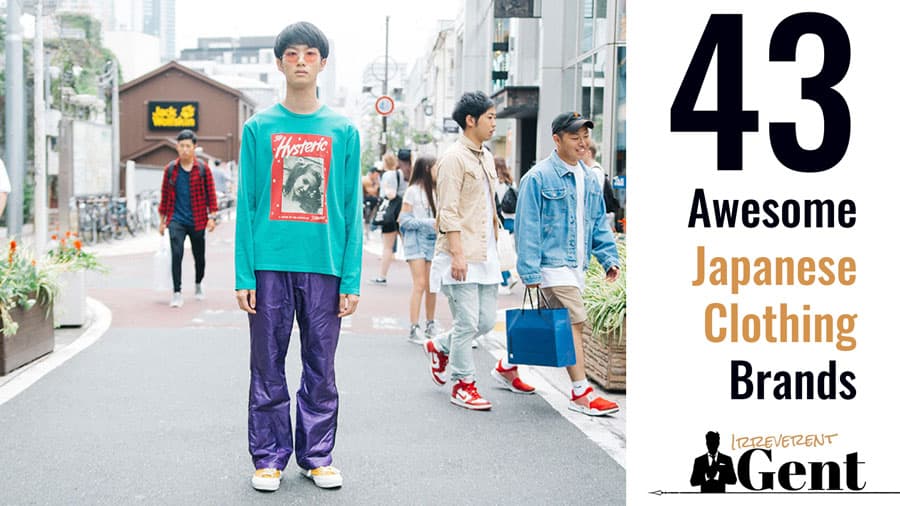Why Fashion Experts Prefer Specific Fabrics in Branded Clothing Lines
Why Fashion Experts Prefer Specific Fabrics in Branded Clothing Lines
Blog Article
Comprehending Clothing: The Relevance of Fabric Selections in Your Wardrobe
The option of fabric in garments plays a pivotal role in both aesthetics and capability. Different products supply differing degrees of convenience, longevity, and breathability, directly influencing the user's experience. Understanding these subtleties can improve one's closet markedly. Many neglect just how these choices can influence not simply individual style, but likewise sustainability. What textile decisions could redefine your closet and straighten it with both style and obligation?
The Role of Fabric in vogue and Capability

Usual Textile Types and Their Qualities
When choosing clothing, comprehending the attributes of usual fabric types is necessary for making notified choices. Cotton, a widely-used natural fiber, is recognized for its breathability, gentleness, and versatility, making it suitable for sportswear and everyday garments. Linen, another all-natural choice, flaunts superb moisture-wicking residential or commercial properties and a distinct structure, suitable for cozy climates.Wool, typically preferred for its warmth and durability, varies in fineness; merino wool is soft versus the skin, while coarser types are utilized for outerwear. Artificial textiles like polyester and nylon use durability and resistance to wrinkles, making them prominent for activewear and traveling garments. Lastly, blends, which combine artificial and natural fibers, can boost capability while keeping comfort. By recognizing these material qualities, people can choose clothing that aligns with their way of life and visual choices.
Breathability and Convenience: Selecting the Right Fabrics for Different Climates
Picking the right fabrics for numerous environments can significantly improve comfort and general wearability. Breathable materials are crucial in warm climates, as they enable air blood circulation and moisture evaporation. Fabrics such as cotton, bed linen, and moisture-wicking synthetics successfully draw sweat away from the body, maintaining the wearer cool and completely dry. Conversely, in colder climates, thicker materials like wool or fleece offer insulation while maintaining breathability, guaranteeing warmth without overheating.Additionally, the selection of fabric weight plays a vital duty; lightweight materials are more suitable for summer season, whereas larger alternatives are fit for winter wear. Understanding the distinct homes of each textile allows people to dress suitably for varying climate condition. Inevitably, choosing breathable and comfortable textiles tailored to specific climates can greatly boost everyday convenience and improve the overall experience of putting on clothing.
Sturdiness and Care: Exactly How Fabric Influences Durability of Your Wardrobe
Choosing the ideal products can considerably impact the resilience and treatment demands of a wardrobe. Fabrics such as cotton and polyester are recognized for their strength and convenience of upkeep, making them optimal for daily wear. In comparison, delicate products like silk and shoelace call for even more careful handling and specialized cleaning techniques, which can boost the moment and initiative needed for care. Branded Clothing.Durability is likewise affected by the fabric's weave and coating; firmly woven textiles have a tendency to withstand damage far better than freely woven alternatives. Furthermore, artificial blends often offer boosted longevity, integrating the very best high qualities of numerous fibers.Understanding the treatment directions for each textile is vital, as incorrect drying out or washing can result in premature wear. Eventually, choosing resilient products can bring about a longer-lasting wardrobe, lowering the frequency of replacements and contributing to a more lasting fashion choice
The Influence of Material on Fit and Shape

Sustainable Textile Choices: Making Eco-Friendly Decisions
The impact of fabric expands beyond fit and silhouette to encompass ecological aspects, triggering a growing rate of interest in lasting fabric choices. Green fabrics, such as organic cotton, hemp, and Tencel, are gaining traction among customers that prioritize sustainability in their wardrobes. These materials are frequently produced with less chemicals and water, decreasing their ecological footprint.Additionally, recycled textiles, made from post-consumer waste, provide an ingenious remedy to the textile sector's pollution trouble. Brands progressively welcome transparency in their sourcing techniques, permitting customers to make educated decisions about their purchases.Choosing lasting materials not only supports ethical methods yet likewise encourages the apparel industry to take on even more accountable manufacturing techniques. As understanding of environmental problems increases, individuals are advised to review the long-lasting impact of their textile selections, cultivating a motion in the direction of an extra lasting and environmentally aware technique to style.
Boosting Style: Exactly How Textile Can Transform an Attire
While lots of may concentrate on color and cut when choosing an outfit, the option of fabric plays a necessary duty in elevating design and boosting general look. Various materials convey unique state of minds and messages; for instance, silk shows luxury and class, while denim offers an informal, kicked back vibe. The appearance and drape of a fabric can drastically change the shape, with structured materials providing a refined look and softer ones creating an extra fluid, kicked back aesthetic.Moreover, the weight of the textile influences wearability throughout periods. Light-weight fabrics like bed linen and cotton are optimal for summer, while much heavier materials such as wool and velvet provide warmth and sophistication in cooler months. Understanding textile properties, such as breathability and stretch, click site likewise encourages people to make educated selections that enhance comfort without endangering style. Inevitably, the appropriate fabric can transform a clothing from common to remarkable, making it a vital factor to consider in any kind of wardrobe.
Often Asked Inquiries
How Do I Determine the Material Material of My Clothing?
To identify material web content, one can check out treatment tags, conduct burn examinations for fiber recognition, or seek advice from textile swatches. These techniques help distinguish materials, ensuring educated choices for clothes care and maintenance in day-to-day wear.
Can Fabric Choice Affect My Mood or Confidence?
Fabric selection can considerably influence an individual's mood and self-confidence. Branded Clothing. Specific products might evoke sensations of convenience or sophistication, while others can really feel uncomplimentary or restrictive, ultimately influencing self-perception and psychological well-being throughout the day
What Fabrics Are Best for Sensitive Skin?
For individuals with sensitive skin, natural textiles like bed linen, cotton, and bamboo are commonly suggested. These products are breathable, hypoallergenic, and much less most likely to trigger inflammation, making them ideal options for convenience and skin health.
Just how Do I Correctly Clean and Take Care Of Various Fabrics?
To properly clean and care for different fabrics, one have to think about each material's particular requirements, including temperature level settings, detergents, and drying out approaches, ensuring longevity and maintaining the fabric's original top qualities for suitable use.
Exist Particular Fabrics for Athletic or Performance Use?
Sports or performance wear often uses textiles such as spandex, polyester, and nylon. These products are developed for moisture-wicking, breathability, and flexibility, improving motion and convenience during exercises while providing toughness and support. Conversely, in cooler environments, thicker textiles like woollen or fleece supply insulation while maintaining breathability, ensuring heat without overheating.Additionally, the selection of textile weight plays a vital duty; lightweight materials are preferable for summertime, whereas much heavier choices are fit for wintertime wear. In contrast, fragile products like silk and shoelace need even more careful handling and specialized cleansing approaches, which can increase the time and effort required for care.Durability is also influenced by the fabric's weave and coating; snugly woven textiles have a tendency to resist wear and tear better than freely woven alternatives. In contrast, rigid textiles can limit motion however provide a his comment is here timeless, refined look.Moreover, the density and structure of the material can influence the visual perception of body form. The effect of fabric extends past fit and shape to encompass environmental variables, prompting an expanding rate of interest in sustainable material options. The texture and drape of a fabric can drastically change the silhouette, with organized materials supplying a sleek look and softer ones developing a more fluid, unwinded aesthetic.Moreover, the weight of the fabric influences wearability across periods.
Report this page